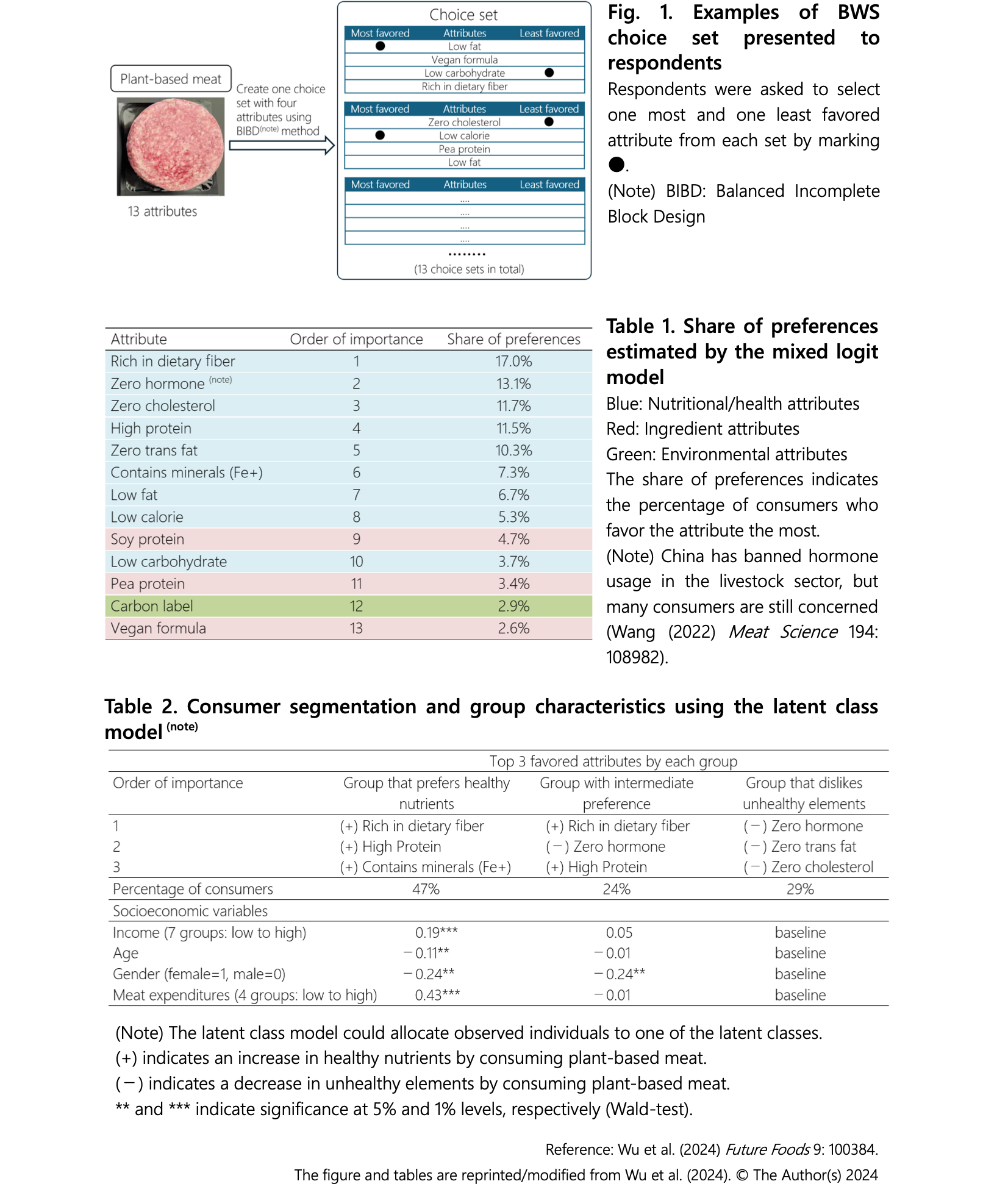Consumers’ preferences for nutritional/health, ingredient, and environmental attributes of plant-based meat in China
Description
Rising income and changes in eating habits are driving global meat demand, with OECD/FAO projecting a 14% increase in meat-derived protein demand by 2030. This raises concerns about health and environmental sustainability. Plant-based meat, made from ingredients like soy, wheat, and peas, offers nutritional and environmental benefits as a sustainable alternative. Compared to traditional meat, plant-based meat has a variety of unique attributes, which could be used in promotion. However, since it is not yet widely available on the market, our understanding of consumers’ preferences for its attributes is still insufficient. Further research on consumer preferences is needed to promote its widespread adoption. Given that traditional meat consumers are its potential consumers, this study conducted a large-scale consumer survey, which covered 2500 individuals, using the best–worst scaling method (BWS method, Figure 1) in five major cities in China, the world's largest meat and plant-based meat market, as well as the largest meat importer. We selected 13 quantifiable attributes of plant-based meat based on literature review and asked the respondents to identify the most and least favored attributes. Then, we analyzed consumers’ preferences for these attributes and examined variations in preference patterns with respect to consumers' socio-demographic characteristics.
Results suggest that consumers prioritized nutritional/health attributes relative to ingredient and environmental attributes, ranking “rich in dietary fiber,” “zero hormone,” and “zero cholesterol” as the most favored attributes. In contrast, the least favored attributes were “pea protein,” “carbon label,” and “vegan formula” (Table 1). Using a latent class model, we classified consumers into three groups. Although all groups prioritized nutritional/health attributes, preferences were heterogeneous with respect to socioeconomic characteristics, with younger, higher-income males who spend more on meat favoring healthy nutrients, while others focused on avoiding unhealthy elements of traditional meat (Table 2).
These results could improve our understanding of consumer preferences for plant-based meat and could be used as a scientific basis for policymaking to promote the spread of plant-based meat, thus contributing to the realization of a sustainable and healthy food system. Since nutritional/health attributes were prioritized by consumers, these attributes could be used to attract consumers. Meanwhile, since preferences also varied among consumers, targeted promotional strategies are necessary. Nevertheless, as the survey was conducted in only five major Chinese cities, applying the findings in other contexts requires considering local consumer characteristics.
Figure, table
- Research project
- Program name
- Term of research
-
FY2022-2024
- Responsible researcher
-
Wu Wenchao ( Social Sciences Division )
KAKEN Researcher No.: 50868693Yuan Rao ( Guizhou University )
Jin Shaosheng ( Zhejiang University )
- ほか
- Publication, etc.
-
Wu et al. (2024) Future Foods 9: 100384.https://doi.org/10.1016/j.fufo.2024.100384
- Japanese PDF
-
2024_C01_ja.pdf1.28 MB
- English PDF
-
2024_C01_en.pdf691.2 KB
* Affiliation at the time of implementation of the study.

